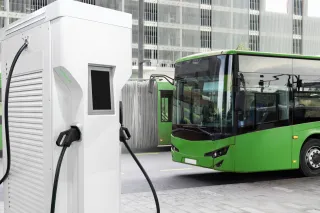VTT joins the EU's SESAR 3 Joint Undertaking as a founding member. The objective is to modernise and digitalise the use and management of European airspace and to enable innovations of the new generation of aviation, such as inspection and delivery drones, electric aircrafts and air taxis.
VTT has been invited to the PPP community, which consists of 60 leading European companies and research institutes, to develop aviation towards sustainability and agile scalability. Funded by the Horizon Europe programme and industry, the research and innovation partnership will enable new innovations by setting up development projects and experiments based on promising technical solutions and service concepts. The aim is also to define the architecture of aviation, rules of the game and principles for safe airspace usage, where both traditional aircrafts and unmanned autonomous drones are involved.
“Our goal is to develop an innovation environment of national and international importance for the new generation of air traffic. SESAR 3 offers a great environment for experimenting and developing innovations that are scalable in Europe”, explains VTT’s Principal Scientist for Aviation Solutions Timo Lind.
Air traffic is exceptionally important in Finland compared to many other European countries; the distances are long, the country is relatively sparsely populated, and the development of road or rail transport alone does not provide citizens with equal mobility opportunities. Low-emission aviation, electric solutions and digitalisation enable the development of sustainable and cost-effective aviation solutions and their integration into multimodal travel and transport chains. Finland has expertise and strong capabilities to be at the forefront of this transformation.
“The future of electronic aviation is being developed with ambition. Under VTT's leadership, we can influence the SESAR 3 Joint Undertaking. This is how we can expand the opportunities for Finns to participate in this changing field”, says Timo Harakka, Minister of Transport and Communications of Finland.
Towards more efficient and cleaner aviation
Today's challenges in air traffic are inefficiency, delay sensitivity to changes (weather, pandemics) and general unpredictability. These are caused by the national and mutually different airspace control structures, poor scalability of flight capacity, fixed flight paths, inadequacies in the exchange of information between operators and low level of automation in air traffic, among other things. Although COVID-19 has significantly reduced air traffic volumes momentarily, the importance of aviation in the logistics of people and goods is still on the increase. In addition to traditional air traffic, drones and electric air taxis are entering the sky. Safe and efficient airspace management requires development.
SESAR 3 develops a new generation of Digital European Sky architecture that addresses these challenges through digitalisation, open data platforms, digital situational awareness, artificial intelligence, analytics and standards.
“A new generation of aviation opens up new business opportunities for Finland. In March 2022, VTT, Business Finland and the Ministry of Transport and Communications will organise a seminar on the topic. We invite companies, universities and research institutes to join us in exploring opportunities for collaboration”, Lind says.
Horizon Europe is the 9th EU Research & Innovation Framework Programme with a budget of €95.5 billion for 2021–2027. The programme funds R&D activities from basic research to market-ready innovations.







